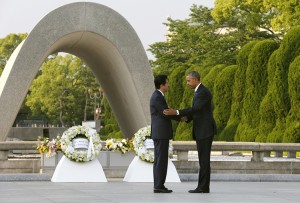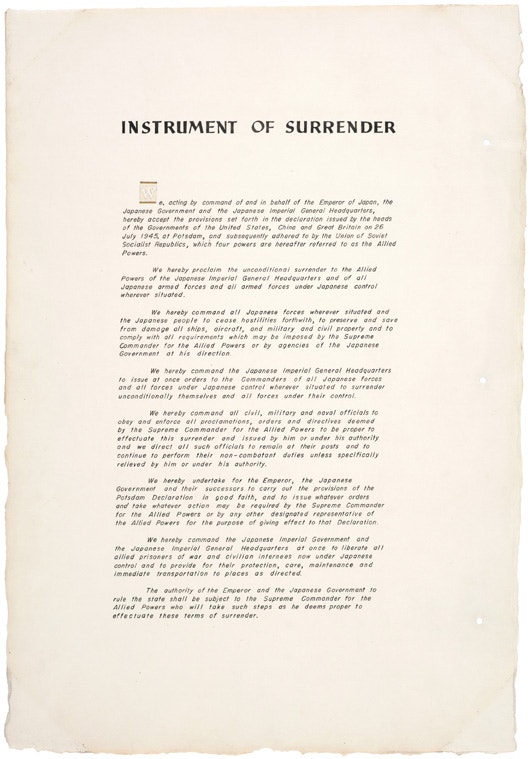Obama in Hiroshima: Death Fell from the Sky
Friday, May 27th, 2016May 27, 2016
Earlier today, Barack Obama became the first sitting United States president to visit Hiroshima, Japan, site of the world’s first atomic bombing in 1945. Accompanied by Japanese Prime Minister Shinzo Abe, the president visited the haunting Hiroshima Peace Memorial Museum before laying a wreath at the Memorial Cenotaph at the center of the Peace Memorial Park. The park—situated near the bombing’s hypocenter (area immediately below the atomic explosion)—was once the site of the city’s bustling commercial district. The saddle-shaped cenotaph bears the names of people killed in the attack.

U.S. President Barack Obama, right, and Japanese Prime Minister Shinzo Abe shake hands after laying wreaths at the cenotaph in the Hiroshima Peace Memorial Park in Japan on May 27, 2016. President Obama was the first sitting president to visit the site of the world’s first atomic bomb attack. Credit: © Kimimasa Mayama, Pool Photo/AP Photo
President Obama then addressed a large, somber, and silent crowd: “Seventy-one years ago, on a bright cloudless morning, death fell from the sky and the world was changed,” he began. “A flash of light and a wall of fire destroyed a city, and demonstrated that mankind possessed the means to destroy itself.” He later added: “We come to mourn the dead, including over 100,000 Japanese men, women and children, thousands of Koreans, and a dozen Americans held prisoner. Their souls speak to us.” The president did not apologize for the bombing, which was done by the United States near the end of World War II. He painted the Japanese as neither victims nor aggressors, but merely called for an end to senseless wars. He also reiterated the need to rid the world of nuclear weapons.
Following his speech, President Obama met with survivors of the bombing. He embraced a visibly moved Shigeaki Mori, a 79-year-old survivor who helped create a memorial to the 12 American prisoners of war killed in the bombing.
On Aug. 6, 1945, a U.S. Army plane, the Enola Gay, dropped an atomic bomb on Hiroshima. The explosion and aftermath killed an estimated 140,000 people. Three days later, on August 9, another atomic bomb was dropped on Nagasaki. These were the first and last times that nuclear weapons were used in warfare. The United States dropped the bombs to convince Japan to surrender—and it worked. World War II unofficially ended a few days later with Japan’s agreement to stop fighting on August 14. The official surrender came on September 2.



